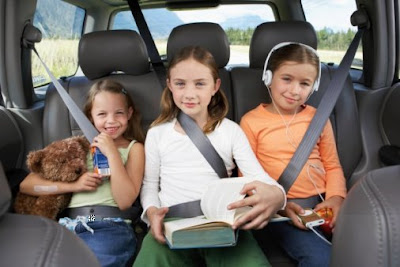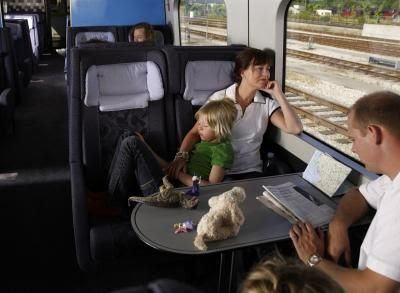While visiting Beijing, the city of the famous American actor - Jet Li, you could take a traditional tour trip to visit traditional tourist spots or you could make use of the options given in this article and add a little spice to your trip and make it ultra interesting.
Beijing, the capital city of the Republic of China, is also known as Peking. The blend of history and modern development makes it one of the most popular tourist destinations and to make most of what it has to offer, the best time to visit Beijing is between September and November. If you are one of those people who likes to do things differently and enjoy thoroughly, here are some fun and interesting things to do in Beijing, the Bicycle City of the World.
Interesting and Fun Activities
Instead of jumping on the bandwagon of regular tours, you could visit the many interesting places in and around Beijing in unconventional ways. You can ask around for the tours listed below from your hotel reception or look out for them in local newspapers and travel magazines. As for the little ones accompanying you, there are manyattractions for kids.
- Hiking the Great Wall of China
- Motorcycle Trips
- Biking and Walking Tours
- Shijingshan Amusement Park (for kids)
- Jingshan Park and Chaoyang Park (Famous for their seasonal activities)
Beijing Opera and Folk Music
One of the things you cannot afford to miss out is the Beijing Opera. It is an exciting mix of history, culture, acrobatics and martial arts. The opera actors make extensive use of heavy costumes, masks and folk music. They make a great appeal to people of all ages and are quite entertaining.
- National Center for Performing Arts Opera House (No.2 West Chang'an Avenue, Xicheng District, Beijing)
- Beijing Liyuan Theater (1F Qianmen Hotel, 175 Yongan Road, Hufangqiao, Xuan Wu District, Beijing)
- Huguang Guild Hall (3 Hufang Road, Xicheng District)
- Peking Opera Theater (No. 30, Haihuxili, Fengtai District)
- Changan Grand Theater (No.7, Jianguomen Neidajie, Dongcheng District)
Art and Cultural Activities
The Chinese culture is full of vivid colors, larger than life imagery and plentiful symbolization, and Beijing is one place where you get to see all of them. There are manyfestivals and fairs that take place in Beijing. Unfortunately, they are celebrated only at certain times in a year, usually during the Chinese new year or spring time. But theart galleries are good places to visit the whole year round.
- Lantern Festival (also known as Yuánxiāojié or Deng Jie, celebrated on the 15th day of the Chinese New Year)
- Longtanhu Temple Fair (No.8 Longtanlu, Chongwen District)
- Ditan Park Fair (Ditan Park, Andingmenwai, Dongcheng District)
- 798 Art Zone or Qijiuba Gongchang (Chaoyang Qu, North of Dashanzi Huandao, Chaoyang district)
- Wan Fung Art Gallery (No.136 Nan Chi Zi Street, Dong Cheng District)
Entertainment
There is no dearth of entertainment in Beijing for anyone. For those who are not satisfied with visiting only the tourist spots, there are many famous teahouses (no it's not a place to have just tea!) where you can witness live tea performances, deeply rooted in the history of Beijing. Some of the modern drama performances and puppet shows in Beijing can leave you spell-bound for a long time to come. Those who are ardent movie buffs can find their entertainment in Chinese movies. Then there are entire 'areas' dedicated to clubs, pubs and bars for those who want to experience the modern nightlife of Beijing.
- Beijing Tea Houses: Lao She Teahouse (3F, building 3, Xi Da Jie, Qianmen, Beijing); Santaosha Teahouse (No. Jia 1, Waiguan Xiejie, Chaoyang District)
- Theater in Beijing: Beijing People's Art Theater (22, Wangfujing Da Jie)
- Puppet Shows: China Puppet Theater (A1 Anhua Xili, Chaoyang)
- Chinese Movies: Megabox (G1, Sanlitun Village, Sanlitun); Stellar International Cinema Address (5/F, Jinyuan Shopping Center, 1 Yuandalu, Haidian District, Beijing)
- Nightlife: Tianqiao Area, Sanlitun Bar Street and Embassy Area (Famous for rock-and-roll, hip-hop, jazz and other such activities)
Famous Beijing Cuisine
The culture of any place is always reflected in the taste of its cuisine. Like its culture, Beijing cuisine is steeped in its history. So there is a variety of cuisine to be tried in Beijing - calorie rich cuisine, cuisine based on herbal medicine, street food and western cuisine with a Beijing twist. In short, it is a culinary feast for food lovers!
- Beijing Roast Duck
- Shandong cuisine (Quick-fired mutton is the most common dish)
- Huai'an -Yangzhou Cuisine (Mr. Pan's Fish)
- Wolong Cuisine (Famous for chinese herbal tea, chicken in parmesan, sichuan pepper and roasted lamb)
- Beijing Snacks (Especially on Donghuamen Night Snack Street and Wangfujing Snack Street)
Acrobatic Stunt Shows
Chinese acrobatic shows are an amazing visual treat and the fact that there is an acrobatic show almost every evening is like an icing on a cake. These shows have unbelievable stunts, performed without the usual safety nets. At a point where you think there is going to be an accident, you are surprised with a spectacular stunt.
- Traditional Chinese Acrobatics Show (Chaoyang Theater)
- The Legend of Kung Fu (Red Theater)
- China National Acrobatic Troupe Performance (Tiandi Theater)
- Star Dream Acrobatic Show (Dongtu Theater)
- Legend of Jinsha (Beijing Workers Club)
Spas and Bath Houses
Traditional Chinese Massages, especially the tui na massage, is a great way to de-stress. The tui na massages are known to relieve backache, joint pain and muscular tension. Some of the spas offer Chinese massage therapies along with other modern therapies. Apart from these, you could have your manicure and pedicure done intraditional Chinese nail art. Another great way to relax and refresh in Beijing is by making use of the famous Beijing bath houses.
- Bodhi Therapeutic Retreat (17 Gongti Beilu, Chaoyang District)
- Jingchen Retreat Spa (B2\F, China World Hotel, 1 Jianguomen Waidajie)
- Spa No. 8 Hot Springs Club (8 Chaoyang Gongyuan Xi Lu, Chaoyang District)
- Langtaosha Bath House (6 Xueyuan Lu, Haidian)
- Frost: Coffee, Nails and Cocktails (55 Xingfucun Zhong Lu, Sanlitun)
Shopping
Beijing is famous for its shopping centers that range from large commercial centers to local fleas markets and antique markets. Just make sure you know what you want and have adequate bargaining skills. Though you will have to be on your guard against low quality material almost everywhere, you are sure to find treasures to take back home.
- Wangfujing Dajie (From East Chang'an Avenue to China Art Gallery)
- Xiushui Silk Street Market (On the East Xiushui Street, near the U.S. Embassy)
- Liulichang Culture Street (On the South of the Peace Gate, Xuanwu District; famous for Chinese artifacts)
- Dashilan Street (A 580 year old commercial street near the Qianmen Gate)
- Hongqiao Market (Opposite the Tiantan Park, Tiantan Donglu, Chongwen District)
Sports
Beijing offers many sports to choose from and many more sport centers. Dongdan Sports Center, Ritan Park, Yuyuantan Park and Julong Garden Fitness Club are some of the frequented sports centers in Beijing.
- Martial Arts
- Ice Skating
- Sailing
- Target Shooting
- Golf Courses
This is just a small list of the most interesting things to do in Beijing from the many options that are available for tourists. Plan out your trip and the things you wish to do well in advance. While this is a good thing to do for any tour trip, it becomes all the more necessary for a place like Beijing which is constantly flooded with people. Making ticket arrangements and reservations before you actually go there, is a must if you do not want to be left out. In any case, a visit to Beijing is bound to be memorable and interesting in the least.















